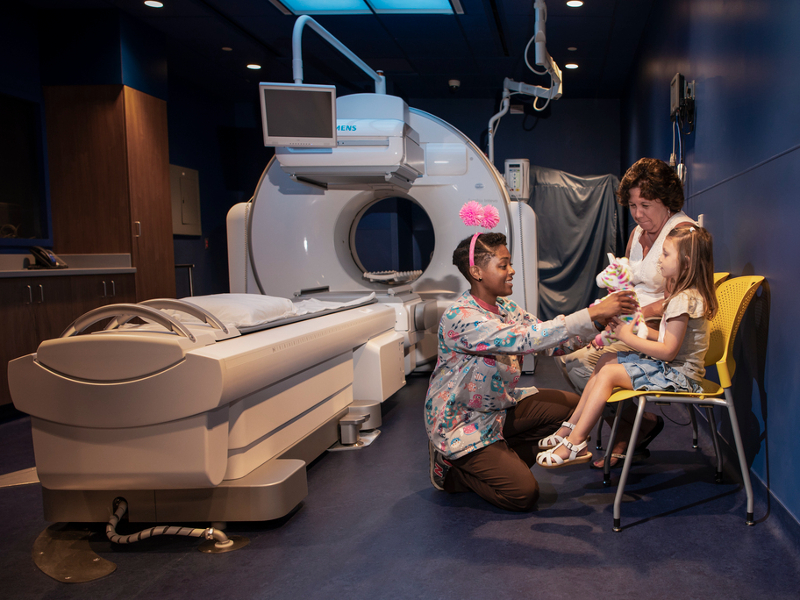Treatment
Pediatric Percutaneous Liver Biopsy
 The perm in “percutaneous” means “to go through the skin.” During a percutaneous liver biopsy, a doctor places a needle through the skin of the right upper abdomen into the liver and takes small pieces of tissue to send to a laboratory for analysis. In most cases, the Interventional Radiology team at Children's National Hospital uses this procedure to determine why a child has increased liver enzymes. Causes include hepatitis or biliary atresia, which is the underdevelopment of the bile ducts leading to the small intestine.
The perm in “percutaneous” means “to go through the skin.” During a percutaneous liver biopsy, a doctor places a needle through the skin of the right upper abdomen into the liver and takes small pieces of tissue to send to a laboratory for analysis. In most cases, the Interventional Radiology team at Children's National Hospital uses this procedure to determine why a child has increased liver enzymes. Causes include hepatitis or biliary atresia, which is the underdevelopment of the bile ducts leading to the small intestine.
Frequently Asked Questions
How is a percutaneous liver biopsy performed in children?
Will my child be awake during the percutaneous liver biopsy procedure?
How long does the percutaneous liver biopsy procedure in children take?
What risks are associated with a percutaneous liver biopsy in children?
What happens after the percutaneous liver biopsy procedure?
When can I remove my child's bandage after a percutaneous liver biopsy procedure?
When can my child bathe after a percutaneous liver biopsy?
Are there any activity restrictions after a percutaneous liver biopsy in children?
How is a percutaneous liver biopsy performed in children?
Will my child be awake during the percutaneous liver biopsy procedure?
How long does the percutaneous liver biopsy procedure in children take?
What risks are associated with a percutaneous liver biopsy in children?
What happens after the percutaneous liver biopsy procedure?
When can I remove my child's bandage after a percutaneous liver biopsy procedure?
When can my child bathe after a percutaneous liver biopsy?
Are there any activity restrictions after a percutaneous liver biopsy in children?
Providers Who Offer Percutaneous Liver Biopsy
Departments that Offer Percutaneous Liver Biopsy

Interventional Radiology
Children's National interventional radiologists perform a full range of minimally invasive, image-guided procedures to both diagnose and treat disease in infants, children and adolescents. Learn more about how we help children in our care.

Help Kids and Make a Difference
Invest in future cures for some of life's most devastating diseases. Give today to help more children grow up stronger.







